China Sinking Fishing Vessel Raises Tensions With Vietnam
May 27, 2014
Vietnam and China traded barbs over the sinking of a Vietnamese fishing boat, their most serious bilateral standoff since 2007 as China asserts its claims in the disputed South China Sea.
“It was rammed by a Chinese boat,” Vietnamese Foreign Ministry spokesman Le Hai Binh said by phone of the Vietnamese vessel, with the crew of 10 rescued after the scrap. The incident occurred after some 40 Chinese fishing vessels encircled a group of Vietnamese boats in Vietnam’s exclusive economic zone, the government in Hanoi said in a statement on its website.
China said the Vietnamese vessel capsized after it rammed a Chinese fishing boat, having intruded into a “precautionary area” around an oil rig that China has located near islands claimed by both Vietnam and China.
“We once again urge the Vietnamese side to stop immediately all kinds of disruptive and damaging activities and avoid in particular dangerous actions on the sea,” Chinese Foreign Ministry spokesman Qin Gang told reporters in Beijing.
China’s 2012 success in assuming control of the Scarborough Shoal, an area previously overseen by the Philippines, highlighted to nations from Vietnam to Japan the potential consequences of the Chinese push to assert claims in neighboring bodies of water. Yesterday’s incident came after Chinese aircraft flew close to Japanese planes on May 24 in disputed airspace in the East China Sea, and days before U.S. Defense Secretary Chuck Hagel visits Singapore for a regional meeting of defense officials.
"Sending A Message"
“The message China is sending Vietnam is, this area of water is Chinese territory,” Ha Hoang Hop, visiting senior fellow at the Institute of Southeast Asian Studies in Singapore, said by phone of the boat sinking. “Yesterday a spokesman for China said Vietnam’s claims are ‘ridiculous.’ They are escalating things at sea and with their language.”
China’s placement of the rig near the contested Paracel Islands sparked violent protests in Vietnam this month and led China to send ships to evacuate workers from the country after three Chinese nationals were killed. It spurred confrontations between coast guard vessels, including the use of water cannons and accusations of boats being rammed. China says the rig is in its territory and that it has long drilled in the area.
Vietnam has “insisted on disturbing the normal operation by the Chinese side and taken dangerous actions on the sea,” Qin said, adding that Vietnamese actions will hurt their own interests. Vietnam’s Foreign Ministry said it lodged a protest with the Chinese Embassy over the sinking.
China’s ‘Lifeline’
China is devoted to promoting peaceful settlement of disputes in the South China Sea through direct negotiation with the countries concerned, China’s Vice Foreign Minister Liu Zhenmin said in Beijing today, according to Xinhua News Agency.
“Being the lifeline for China at sea, the South China Sea is far more important to China than to other countries,” Xinhua cited Liu as saying.
The tensions come as China’s President Xi Jinping expands the country’s naval reach to back its claims in the South China Sea that are based on a “nine-dash line” map, first published in 1947. That map runs hundreds of miles south from China’s Hainan Island to equatorial waters off the coast of Borneo.
China’s dispute with Vietnam was one of the most popular political topics on China’s heavily censored social media platforms today, with users defending China’s actions during the incident over the fishing boat.
“Should we continue to swallow insult and humiliation silently?,” a commenter identified as Trivial Passenger said of Vietnam’s claims. “These are naked abuses and insults.”
Rig Relocated
The first phase of the drilling, which began May 2 off Zhongjian Island in the Xisha Islands, as the Paracels are known in Chinese, has been completed, China Oilfield Services Ltd. (2883), which is conducting the operation, said in a statement today. Exploration has moved to another place and is expected to end in mid-August, according to the statement.
China’s actions violate international law and threaten peace, security and freedom of navigation, Vietnamese Prime Minister Nguyen Tan Dung said on May 22 in Manila. Tensions in the South China Sea risk disrupting the flow of goods, Dung said, with the resource-rich waters taking in some of the world’s busiest shipping lanes.
China and Vietnam fought a border war in 1979, with China having forcibly taken the Paracel Islands from Vietnam five years earlier. In 1988, a Chinese naval attack in the Spratly Islands, which Vietnam also lays claims to, killed 64 Vietnamese border guards as China seized seven atolls. In 2007, Chinese naval patrol vessels fired on a Vietnamese fishing boat, killing one sailor.
China’s Determination
In March 2013, Vietnam’s government lodged a protest after it said a Chinese ship fired on a fishing vessel near the Paracels and caused a cabin fire.
Vietnam’s leaders will probably protest the latest incident, according to Xu Liping, a researcher at the National Institute of International Strategy at the Chinese Academy of Social Sciences in Beijing.
“But from China’s point of view it reflects China’s determination -- that there will be no compromise on the problem of the Xisha islands,” Xu said. “Vietnam will likely counter-attack, stir up domestic opinion or send fishing boats to disturb our drilling platforms. This will continue, but slowly it will get less, when they realize their disturbances have no use,” he said.
Vietnam’s benchmark VN Index (VNINDEX) of shares rose 1.6 percent today. The gauge has retreated about 9 percent from this year’s high on March 24. The dong was steady at 21,145 per dollar as of 3:47 p.m. local time.
Spratly Dispute
Philippine President Benigno Aquino, visiting a military base today on Palawan Island, the jumping-off point to the Spratly Islands, another contested part of the South China Sea, said he may raise Chinese reclamation of a disputed reef with Asean and a United Nations arbitration process already underway.
The situation on the shoals is volatile and the navy needs to upgrade its base in Ulugan Bay on Palawan, according to Philippine Navy chief Vice Admiral Jesus Millan.
“The menace of various threats to territorial integrity are real and present,” he told reporters.
Addressing the actual territorial claims will take a long time, Singapore’s Foreign Affairs Minister K. Shanmugam said yesterday in an interview.
“What’s achievable is to try and have a code of conduct that tries to work out how the countries, countries’ ships and so on interact with each other, what can be done, what cannot be done, what kind of conduct is acceptable, what kind of conduct is unacceptable,” he said.
Asean has called for progress on the code with China that would seek to preserve freedom of navigation in the South China Sea. Talks have made little headway since China agreed in July to start discussions.






 Reply With Quote
Reply With Quote


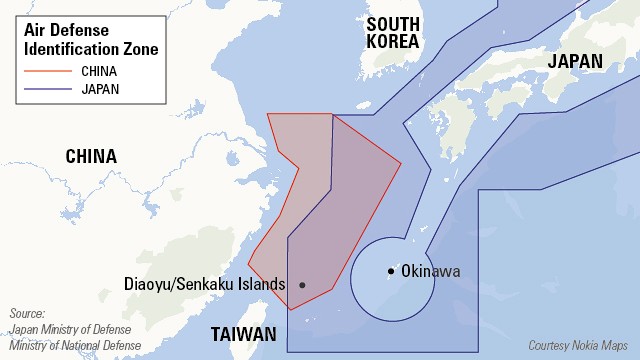 China's Air Defense Identification Zone
China's Air Defense Identification Zone U.S. defies China with B-52 flight
U.S. defies China with B-52 flight 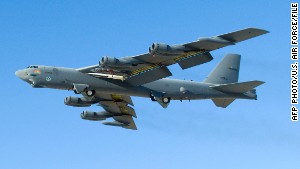 U.S. defies China's newly claimed airspace
U.S. defies China's newly claimed airspace 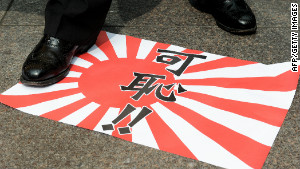 Clinton: Diplomacy to end land disputes
Clinton: Diplomacy to end land disputes 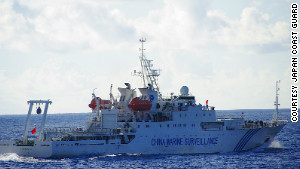 Tensions rise over Asian islands
Tensions rise over Asian islands
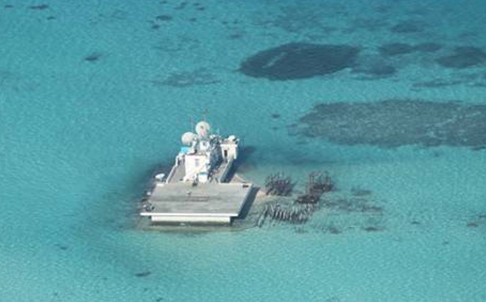
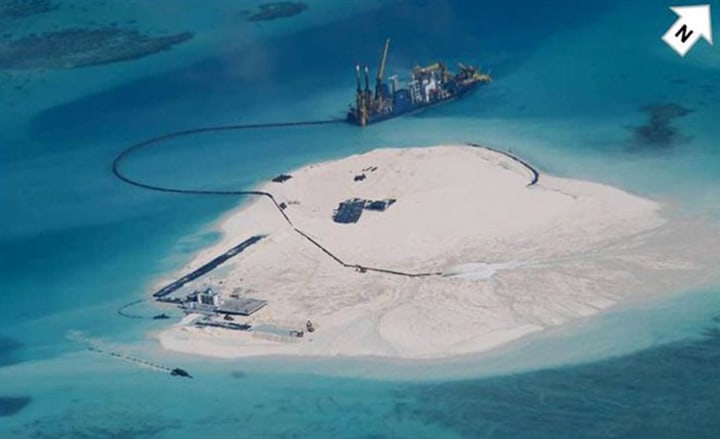
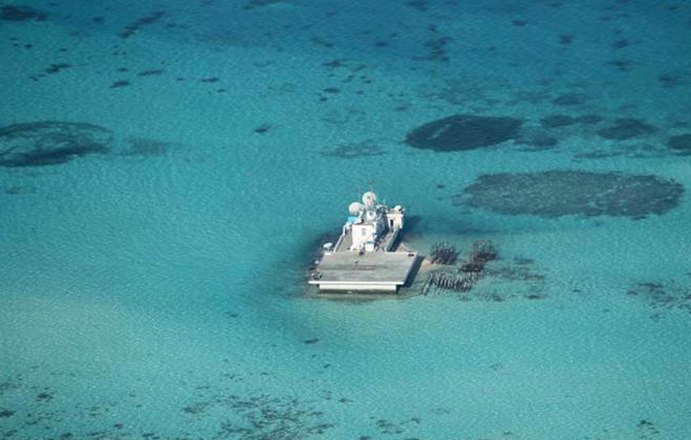









Bookmarks